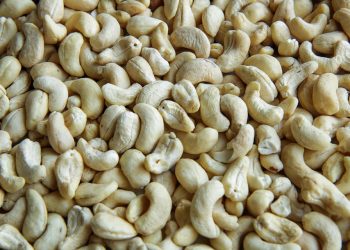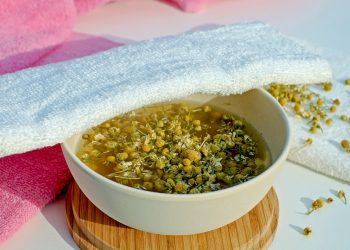Embracing natural eating is more than just a trend; it’s a powerful way to nourish your body and reclaim your health. This approach focuses on whole, unprocessed foods that are as close to their natural state as possible. If you’ve been feeling sluggish or confused by the myriad of diets out there, it’s time to simplify your relationship with food. Let’s dive into ten simple ways you can start embracing natural eating today.
Contents
- Understanding Natural Eating
- 1. Start with Whole Foods
- 2. Cook at Home More Often
- 3. Read Labels Like a Pro
- 4. Incorporate More Fruits and Vegetables
- 5. Mind Your Portions
- 6. Stay Hydrated with Water
- 7. Listen to Your Body’s Signals
- 8. Limit Processed Foods
- 9. Experiment with Plant-Based Meals
- 10. Build a Supportive Community
- Bottom Line
- FAQ
Understanding Natural Eating
Natural eating is about choosing foods that are minimally processed, fresh, and full of nutrients. Think fruits, vegetables, whole grains, lean proteins, and healthy fats. This isn’t just a diet; it’s a lifestyle that can transform your health, boost your energy, and improve your mood. By making these small shifts, you’ll discover a vibrant world of flavors and benefits that come from nourishing your body with nature’s best offerings.
1. Start with Whole Foods
Whole foods are the cornerstone of natural eating. These are foods that are free from artificial ingredients and preservatives. Instead of reaching for that packaged snack, opt for:
- Fresh fruits like apples, bananas, and berries
- Vegetables such as spinach, broccoli, and carrots
- Whole grains like quinoa, brown rice, and oats
- Lean proteins including chicken, fish, beans, and legumes
Why? Whole foods are bursting with nutrients that your body craves. They provide the energy you need without any of the artificial additives that can leave you feeling drained.
2. Cook at Home More Often
Cooking at home allows you to control what goes into your meals. It’s an opportunity to experiment with flavors and ingredients. Here’s how to make it enjoyable:
- Try new recipes that highlight seasonal produce.
- Involve your family or friends in the cooking process.
- Plan your meals for the week to avoid last-minute unhealthy choices.
Benefit: Home-cooked meals are usually healthier and more satisfying than takeout. Plus, they can be a fun and rewarding experience.
3. Read Labels Like a Pro
When you do buy packaged foods, make sure to read the labels carefully. Here’s what to look for:
- Ingredients List: Choose items with short ingredient lists. The fewer the ingredients, the better.
- Nutritional Information: Pay attention to serving sizes and the amounts of sugar, sodium, and unhealthy fats.
Pro Tip: If you can’t pronounce an ingredient, it’s probably best to avoid it. Stick to foods that are straightforward and recognizable.
4. Incorporate More Fruits and Vegetables
Aim to fill half your plate with fruits and vegetables at every meal. Not only are they low in calories, but they are also rich in vitamins, minerals, and fiber. Consider these tips:
- Add spinach to your smoothies for an extra nutrient boost.
- Snack on carrot sticks or apple slices instead of chips.
- Experiment with different cooking methods — roasting, steaming, or grilling can enhance their flavor.
Impact: A diet rich in fruits and vegetables can reduce the risk of chronic diseases and improve overall health.
5. Mind Your Portions
Natural eating doesn’t mean you can eat as much as you want of everything. Mindful portion control is key. Here are some strategies:
- Use smaller plates to help with portion sizes.
- Listen to your hunger cues; eat when you’re hungry and stop when you’re satisfied.
- Avoid eating in front of screens, which can lead to mindless munching.
Result: You’ll enjoy your food more and feel better physically without the overly stuffed feeling.
6. Stay Hydrated with Water
Often, we mistake thirst for hunger. Make water your primary beverage. Here’s how to ensure you’re getting enough:
- Carry a reusable water bottle with you.
- Infuse water with fruits like lemon or cucumber for a refreshing twist.
- Set reminders on your phone to drink water throughout the day.
Why It Matters: Staying hydrated supports digestion, energy levels, and overall health.
7. Listen to Your Body’s Signals
Your body is incredibly wise. It knows what it needs. Pay attention to how different foods make you feel. Here are some tips:
- Keep a food diary to track how various meals affect your energy and mood.
- Notice any food intolerances or allergies and adjust your diet accordingly.
- Engage in mindful eating; savor each bite and appreciate the flavors.
Benefit: Learning to listen to your body can lead to healthier choices and improved well-being.
8. Limit Processed Foods
Processed foods can be tempting but often come with hidden sugars, unhealthy fats, and additives. Limit these in your diet by:
- Keeping healthy snacks on hand, like nuts or yogurt.
- Preparing meals from scratch whenever possible.
- Choosing whole-grain options instead of white bread or pasta.
Impact: Reducing processed foods can lead to better digestion and increased energy.
9. Experiment with Plant-Based Meals
Even if you’re not ready to go fully vegetarian, incorporating more plant-based meals into your diet can be hugely beneficial. Here’s how to get started:
- Try “Meatless Mondays” to experiment with new recipes.
- Explore legumes, nuts, and seeds as protein sources.
- Discover new grains like farro or barley.
Why This Matters: Plant-based diets are not only good for your health but also for the environment, making them a win-win.
10. Build a Supportive Community
Surround yourself with people who support your natural eating journey. This can include:
- Joining a local cooking class or health-focused group.
- Following nutritionists or health bloggers for inspiration.
- Connecting with friends who share your goals.
Impact: A supportive community can hold you accountable and inspire you on your journey to better health.
Bottom Line
Embracing natural eating today is about making small, sustainable changes that lead to a healthier, happier you. Start with these ten simple steps, and over time, you’ll notice the difference in how you feel, look, and live.
Eating is not just about sustenance; it’s about nourishing your body with love and care. So, take that first step today. Your body will thank you!
FAQ
What is natural eating?
Natural eating focuses on whole, unprocessed foods that are rich in nutrients, avoiding artificial additives and preservatives.
Can I still enjoy my favorite foods?
Absolutely! The goal is to find a balance. You can enjoy your favorites in moderation while incorporating more natural foods into your diet.
How can I make meal prepping easier?
Start small by preparing just a few meals for the week. Use simple recipes and batch-cook grains and proteins to save time.
Is natural eating expensive?
While some organic products can be pricey, focusing on seasonal produce and buying in bulk can help you save money while eating healthily.
How do I stay motivated on this journey?
Set realistic goals, track your progress, and celebrate your successes, no matter how small they may seem. Surround yourself with supportive people who share your values.
Get Your FREE Natural Health Guide!
Subscribe now and receive our exclusive ebook packed with natural health tips, practical wellness advice, and easy lifestyle changes — delivered straight to your inbox.














